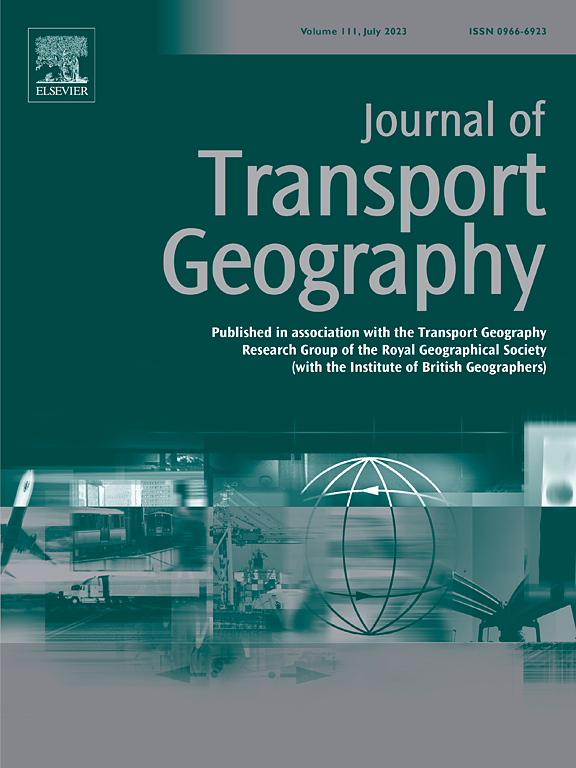Locating in informally-developed spaces: Disentangling the spatial preferences of e-commerce logistics microhubs
IF 5.7
2区 工程技术
Q1 ECONOMICS
引用次数: 0
Abstract
The growing demand for first- and last-mile delivery services, driven by the boom in online retailing, makes it crucial to establish a network of microhubs with relatively high density. This need prompts an investigation into how parcel delivery companies (PDCs) balance the goals of increasing microhub density while minimizing facility costs in the deployment process. Although several studies have examined the spatial distribution of microhub locations, few have fully explored the heterogeneity of urban spaces, including formally- and informally-developed spaces, and how these influence microhub placement across different PDC types. Focusing on Shenzhen, this study uses near analysis and identifies the spatial types where microhubs are located across different parcel delivery company (PDC) types. Furthermore, a discrete choice analysis is performed to explore the factors that influence location selection. The results indicate that informally-developed spaces, characterized by low rental prices and loose administrative regulation, are preferred by most types of PDCs. However, the degree of preference for informally-developed spaces varies across different PDC types. Such preference is primarily driven by affordability in terms of rental costs and proximity to customers. Variations in these factors across PDC types, each with different historical contexts, result in distinct patterns of microhub location distribution. These findings provide insights that can inform policy and urban planning strategies regarding the management and development of informally-developed spaces.
定位于非正式发展空间:解开电子商务物流微中心的空间偏好
在网上零售蓬勃发展的推动下,人们对第一英里和最后一英里送货服务的需求不断增长,因此建立一个相对高密度的微中心网络至关重要。这一需求促使人们对包裹递送公司(PDCs)如何平衡增加微中心密度的目标,同时在部署过程中最大限度地降低设施成本进行调查。虽然有几项研究考察了微枢纽位置的空间分布,但很少有研究充分探讨城市空间的异质性,包括正式开发和非正式开发的空间,以及这些空间如何影响不同PDC类型的微枢纽位置。本研究以深圳为研究对象,运用近距离分析方法,确定了不同快递公司类型的微枢纽所在空间类型。此外,还进行了离散选择分析,以探讨影响区位选择的因素。结果表明,大多数类型的城市发展中心都倾向于租赁价格低、行政监管宽松的非正式开发空间。然而,对非正式开发空间的偏好程度在不同的PDC类型中有所不同。这种偏好主要是由租金成本的可承受性和与客户的距离所驱动的。这些因素在不同PDC类型之间的变化,每种PDC类型都有不同的历史背景,导致微集线器位置分布的不同模式。这些发现为非正式开发空间的管理和发展提供了政策和城市规划策略。
本文章由计算机程序翻译,如有差异,请以英文原文为准。
求助全文
约1分钟内获得全文
求助全文
来源期刊

Journal of Transport Geography
Multiple-
CiteScore
11.50
自引率
11.50%
发文量
197
期刊介绍:
A major resurgence has occurred in transport geography in the wake of political and policy changes, huge transport infrastructure projects and responses to urban traffic congestion. The Journal of Transport Geography provides a central focus for developments in this rapidly expanding sub-discipline.
 求助内容:
求助内容: 应助结果提醒方式:
应助结果提醒方式:


